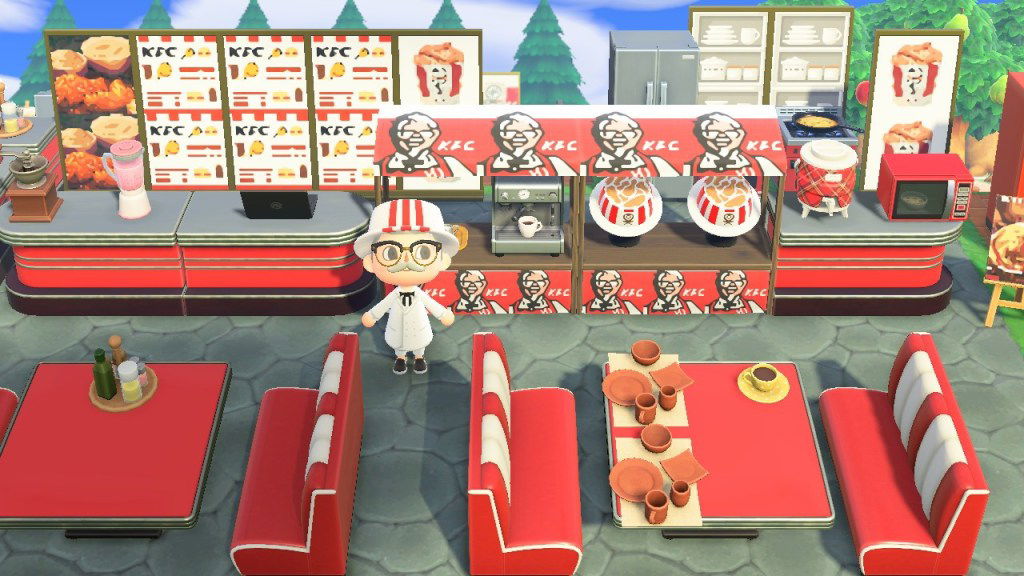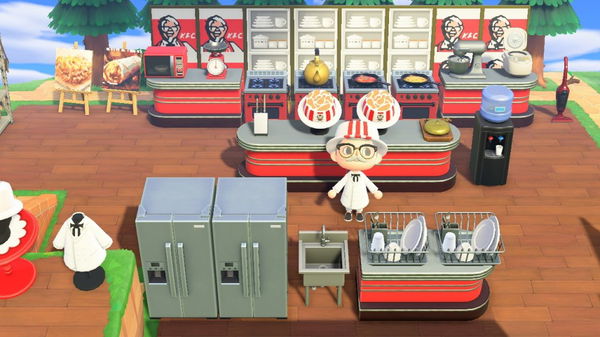

With the global pandemic still in full swing, fast food restaurants have been one of the hardest-hit businesses in the world. Social distancing norms have made it so that customers can no longer physically go to restaurants.
Watch What’s Trending Now!
But it looks like Animal Crossing may have figured out a quick fix.
KFC Philippines has partnered with an advertising company Ogilvy, and has launched a virtual KFC restaurant in Animal Crossing.
ADVERTISEMENT
The restaurant was created fully in the game, with extremely detailed surroundings on the island. The special island reportedly includes a fully furnished restaurant, with booths, a kitchen, and the Colonel himself.
The main draw for the entire island will be the mini kitchen, fully equipped, and ready to pump out finger-lickin’ good virtual KFC fried chicken.
ADVERTISEMENT
Real KFC Chicken in Animal Crossing?
The players can also hunt to find the special 11 herbs and spices recipe hidden somewhere on the island, in an inaccessible storage area.
And the best part, real KFC chicken delivered to your door for free! If players manage to track down Colonel Sanders on the island, then they will receive a code, for an 8-piece KFC chicken bucket delivered to their home. The promotion is sure to drive up engagement in Animal Crossing and in real life with KFC also.
ADVERTISEMENT

ADVERTISEMENT
According to the KFC Philippines Facebook page, there will be a daily Dodo Code issued to lucky players. The codes would be provided based on which players made it into the queue first.
The in-game restaurant is an example of brands recognizing video games as a legitimate platform, used by millions regularly. Animal Crossing integrating with KFC means that other billion-dollar brands will all be more comfortable advertising with these massively popular video games.
Also Read – New Game Overtakes Animal Crossing in Sales
ADVERTISEMENT
Animal Crossing New Horizons has shown that the gaming industry holds billions of dollars of potential in-game revenue. Many more brands could integrate themselves into such video games, with offers and tie-ins to real-life products. Think brands like GAP or United Colours of Bennetton merchandising with in-game clothing. Or rewards in a game translating to real clothing.
This blurring of the line between real life and video games can only mean great things for the industry. Stay tuned to this space for more information on brands and the video game industry.
ADVERTISEMENT
ADVERTISEMENT
ADVERTISEMENT

